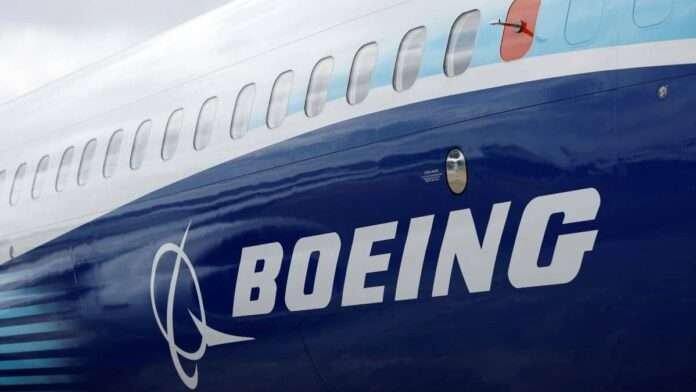Global aerospace major Boeing sees the amendments to the Insolvency and Bankruptcy Code (IBC) in terms of repossession of aviation assets from defaulting leases as a welcome step towards building more robust financing mechanisms in India, especially given the massive aircraft orders placed by domestic airlines.
The issue had taken center stage after aircraft and engine lessors filed several cases in corporate tribunals and courts, seeking repossession of their leased assets from Go First, which had come under bank credit protection.
“As India embraces this aviation boom, the need for infrastructure and policies to sustain growth is evident, given the impending arrival of over 2,400 new airplanes,” Boeing India President Salil Gupte told FE.
“As lessors play an increasingly significant role in India’s aviation, the amendments to the Insolvency and Bankruptcy Code (IBC) are a welcome step towards building more robust financing mechanisms.”
Earlier this month, the Centre amended the IBC to exclude aircraft, engines, airframes, or helicopters from being held by leases that are given a bank construction protection moratorium.
The center said the move will prevent an estimated loss of $1.2 to $1.3 billion that Indian airlines were at risk of incurring due to increased risk perception by aircraft lessors.
After the amendment, the Aviation Working Group (AWG) issued a positive watchlist notice in their CTC compliance index, with a projected increase in India’s score. It would be a positive step towards ease in leasing and financing aircraft equipment for Indian operators.
Vistara expands its wings: Launches direct flights from Delhi to Hong Kong – Full details here
At present, Boeing is the largest foreign original equipment manufacturer (OEM) in terms of sourcing from India. It sources over $1 billion annually through its network of over 300 supplier partners.
“India is an important market for Boeing, and the company has made strategic investments in the country,” said Gupte, emphasising the opportunity to further invest in building support service capabilities to foster the growth of India’s aviation sector.
Boeing’s recent significant investments in India’s aviation sector include partnerships with GMR Aero Technic to establish a Boeing Converted Freighter line in Hyderabad, a Global Support Center in Gurgaon, an India Logistics Center, and a $100 million investment in infrastructure and programmes to train pilots in India, which will support India’s need for new pilots over the next 20 years.
Besides, the expansion of its India operations has made the country home to its largest workforce outside the US.
Citing data, Gupte said that the aerospace major’s presence in India includes a workforce of over 5,000 employees, with another 13,000 employed with its supply chain partners.
Recently, India surpassed Australia as Boeing’s largest presence outside the US by employee headcount. In Australia, the aerospace major employs over 5,000 and 140,000 in the US.
Of the over 5,000 employees in India, 4,500 are engineers and technologists at the Boeing India Engineering & Technology Center (BIETC).
The aerospace major has invested $200 million in establishing a 43-acre, wholly-owned engineering and technology campus (BIETC) in Bengaluru, which is set to become Boeing’s largest facility of its kind outside the United States.
“They (engineers) drive cutting-edge research and development, innovate, and deliver high-quality engineering solutions that support Boeing’s defense, space, and commercial enterprises. Over the past couple of years, we have added around 1,000 employees annually to our workforce and expect to continue to hire through this year as well.”
According to Gupte, the exponential expansion in headcount and India-based operations is a ‘testament’ to the country’s growth potential.
“India’s commercial aviation market is expected to become the third-largest in the world by 2041, with a fleet size nearly quadrupling compared to 2019,” he said.
“The country is also projected to receive over 90% of South Asia’s airplane deliveries, requiring over 2,400 new aircraft, while its cargo market is set to expand significantly, with the fleet growing from 15 to 80 airplanes by 2042, driving a $135 billion demand for commercial services.”
On the exponential rise in air passenger traffic in India, Gupte said that the resurgence of Indian domestic passenger air traffic, surpassing pre-pandemic levels, not only highlights pent-up demand for travel but also “underscores the industry’s adaptability”.
“This resurgence reflects a substantial long-term growth opportunity. India’s growing middle class, with rising disposable incomes, is a significant driver of demand for air travel, both domestically and internationally.”
“Furthermore, the growth in e-commerce is boosting demand for narrowbody conversions, while the expansion of India’s electronics manufacturing industry, particularly in higher-value segments, is fueling increased demand for cargo services.”
As per official data, India’s domestic air passenger traffic grew by over 18% in September 2023 on a year-on-year basis.
The data released by the Directorate General of Civil Aviation (DGCA) showed that India’s scheduled domestic flight operators ferried around 12.24 million passengers last month. In September 2022, the traffic number stood at 10.35 million.
Post Disclaimer
The information provided in our posts or blogs are for educational and informative purposes only. We do not guarantee the accuracy, completeness or suitability of the information. We do not provide financial or investment advice. Readers should always seek professional advice before making any financial or investment decisions based on the information provided in our content. We will not be held responsible for any losses, damages or consequences that may arise from relying on the information provided in our content.



